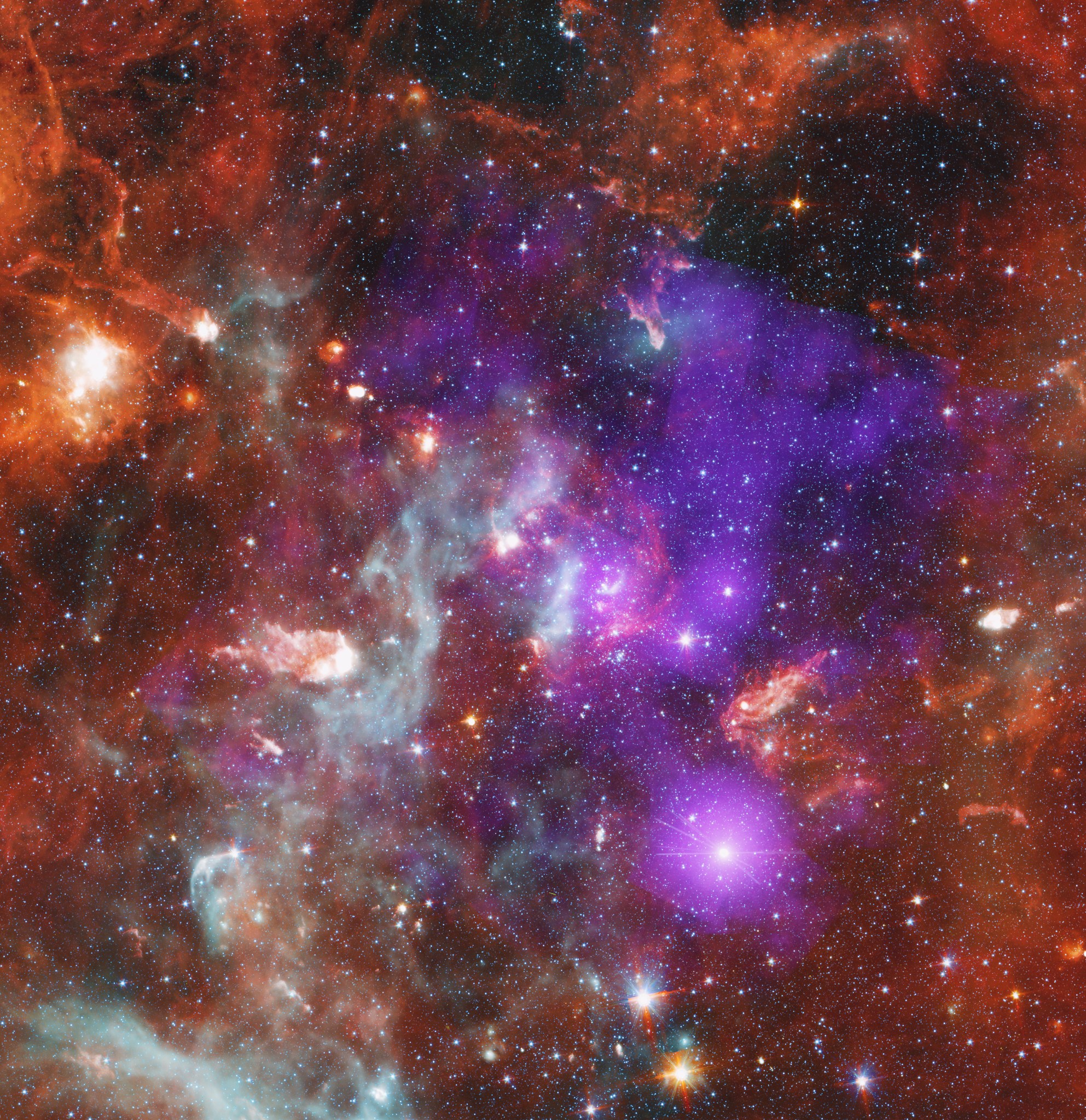X-ray: NASA/CXC/SAO/J. Drake et al, IR: NASA/JPL-Caltech/Spitzer; Image Processing: NASA/CXC/SAO/N. Wolk Most stars form in collections, called clusters or associations, that include very massive stars. These giant stars send out large amounts of high-energy radiation, which can disrupt relatively fragile disks of dust and gas that are in the process of coalescing to form new planets. A team of astronomers used NASA’s Chandra X-ray Observatory, in combination with ultraviolet, optical, and infrared data, to show where some of the most treacherous places in a star cluster may be, where planets’…
Read MoreTag: Spitzer Space Telescope
AstroViz: Iconic Pillars of Creation Star in NASA’s New 3D Visualization
Learn Home AstroViz: Iconic Pillars of… For Educators Overview Learning Resources Science Activation Teams SME Map Opportunities More Science Stories Science Activation Highlights Citizen Science 4 min read AstroViz: Iconic Pillars of Creation Star in NASA’s New 3D Visualization NASA’s Universe of Learning – a partnership among the Space Telescope Science Institute (STScI), Caltech/IPAC, the Center for Astrophysics | Harvard & Smithsonian, and the Jet Propulsion Laboratory and part of the NASA Science Activation program portfolio – recently released a new 3D visualization of the towering clouds of cosmic…
Read MoreMeet the Infrared Telescopes That Paved the Way for NASA’s Webb
Scientists have been studying the universe with infrared space telescopes for 40 years, including these NASA missions, from left: the Infrared Astronomical Satellite (IRAS), launched in 1983; the Spitzer Space Telescope, launched in 2003; and the James Webb Space Telescope, launched in 2021. NASA/JPL-Caltech The Webb telescope has opened a new window onto the universe, but it builds on missions going back 40 years, including Spitzer and the Infrared Astronomical Satellite. On Dec. 25, NASA will celebrate the two-year launch anniversary of the James Webb Space Telescope – the largest…
Read More